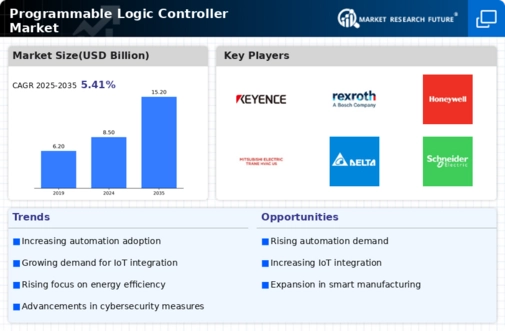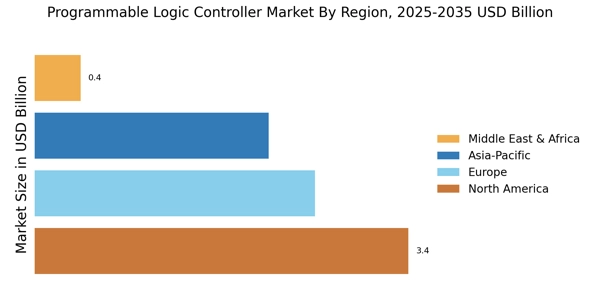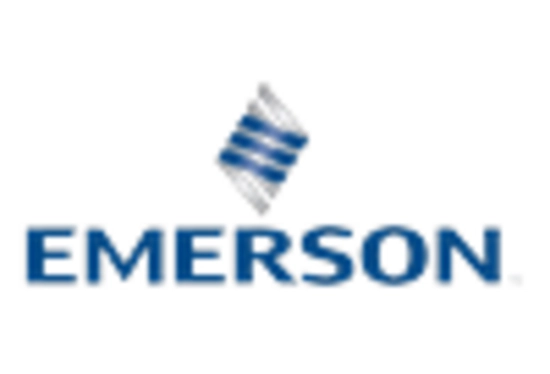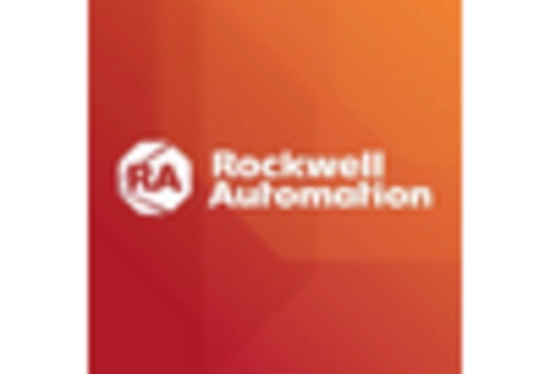Advancements in Technology
Technological advancements play a crucial role in shaping the Programmable Logic Controller Market. Innovations such as enhanced processing power, improved communication protocols, and the advent of cloud computing have transformed the capabilities of PLCs. These developments enable real-time data processing and remote monitoring, which are increasingly sought after by industries aiming for operational excellence. The market is expected to witness a significant uptick in demand for advanced PLCs that support Industry 4.0 initiatives. As of 2025, the market is anticipated to grow at a rate of 7% annually, driven by the need for smarter and more efficient manufacturing solutions.
Increasing Automation in Industries
The rise of automation across various industries is a primary driver for the Programmable Logic Controller Market. As manufacturers seek to enhance productivity and reduce operational costs, the demand for programmable logic controllers has surged. In 2025, the market is projected to reach a valuation of approximately 12 billion USD, reflecting a compound annual growth rate of around 6.5%. This trend is particularly evident in sectors such as automotive, food and beverage, and pharmaceuticals, where precision and reliability are paramount. The integration of PLCs allows for streamlined processes, improved quality control, and reduced downtime, thereby making them indispensable in modern manufacturing environments.
Growing Demand for Process Automation
The growing demand for process automation across various sectors is a significant driver for the Programmable Logic Controller Market. Industries are increasingly adopting automation to enhance efficiency, reduce human error, and ensure consistent product quality. In 2025, the market is projected to expand as companies invest in automated solutions to remain competitive. The food and beverage sector, for instance, is expected to account for a substantial share of the market, as manufacturers seek to optimize production lines and comply with stringent safety regulations. This trend indicates a robust future for PLCs as essential components in automated systems.
Regulatory Compliance and Safety Standards
Regulatory compliance and safety standards are pivotal factors influencing the Programmable Logic Controller Market. As industries face increasing scrutiny regarding safety and environmental regulations, the demand for reliable and compliant automation solutions has intensified. Programmable logic controllers are integral in ensuring that manufacturing processes adhere to these standards, thereby mitigating risks associated with non-compliance. In 2025, the market is likely to see a rise in PLC adoption as companies prioritize safety and regulatory adherence. This trend is particularly pronounced in sectors such as chemicals and pharmaceuticals, where compliance is critical to operational integrity.
Expansion of Smart Manufacturing Initiatives
The expansion of smart manufacturing initiatives is a key driver for the Programmable Logic Controller Market. As industries embrace digital transformation, the integration of PLCs into smart manufacturing systems becomes increasingly vital. These systems leverage data analytics, machine learning, and IoT technologies to optimize production processes. By 2025, the market is expected to grow significantly as manufacturers invest in smart technologies to enhance efficiency and reduce costs. The automotive and electronics sectors are particularly poised for growth, as they adopt advanced PLC solutions to facilitate real-time decision-making and improve overall operational performance.

















Leave a Comment